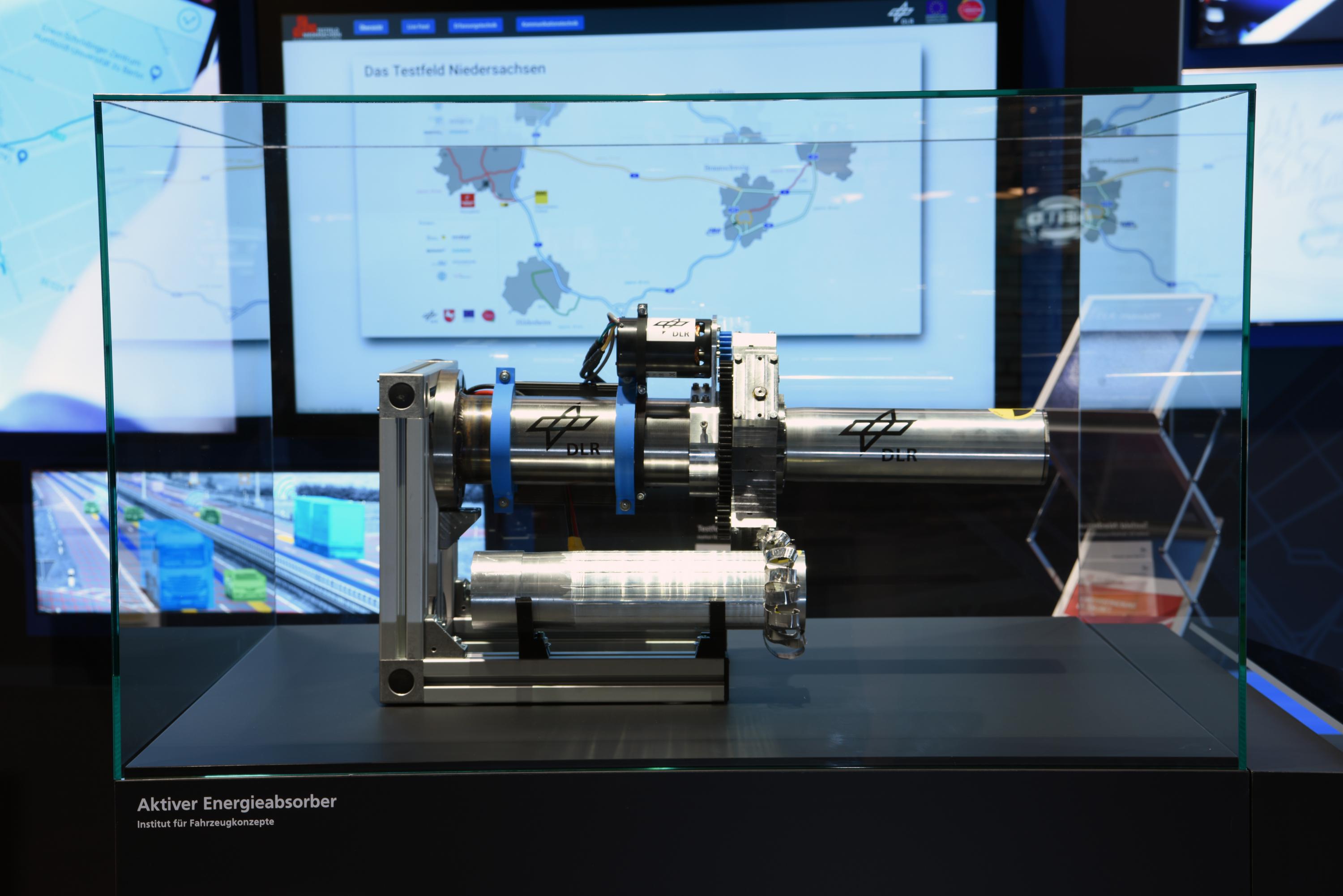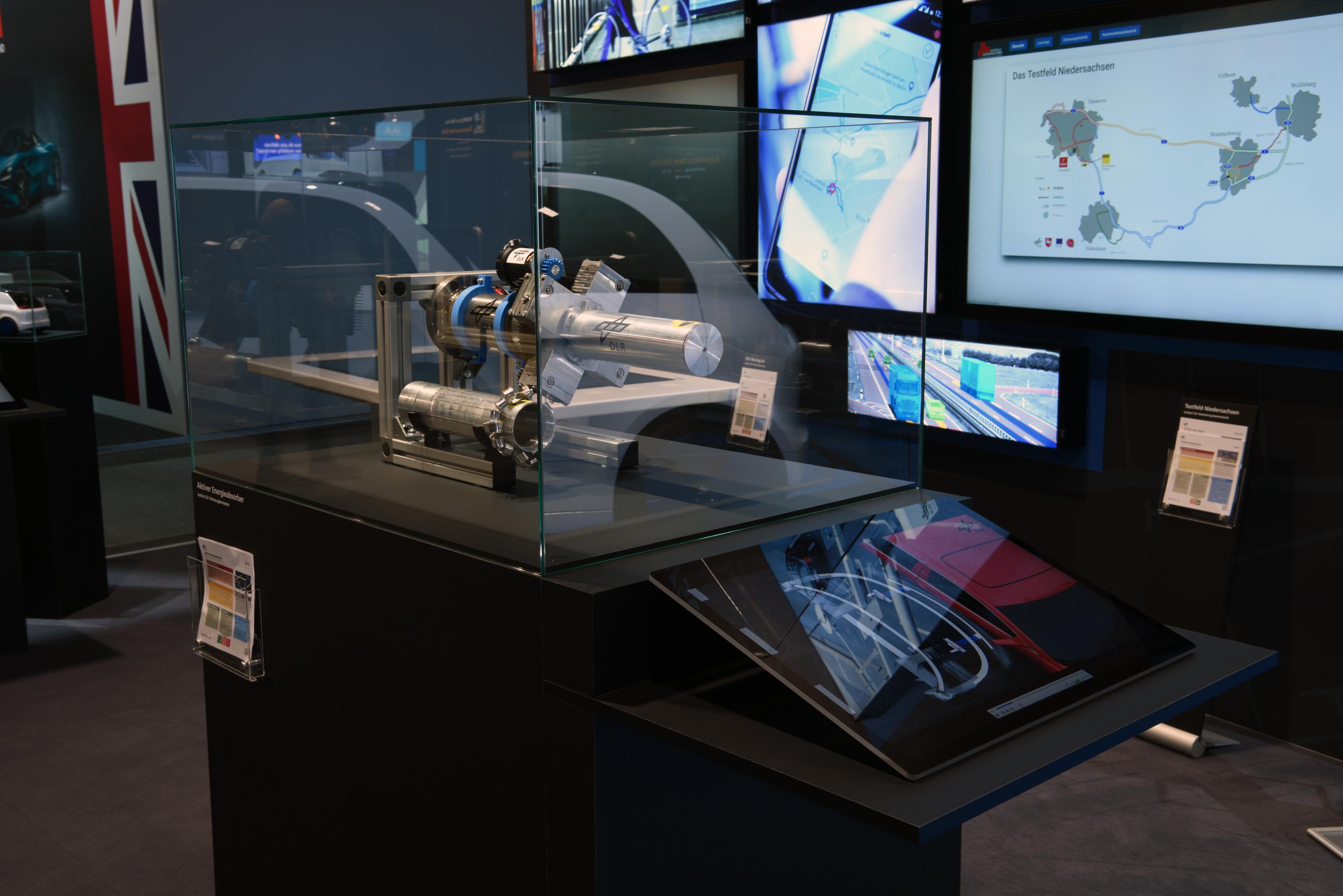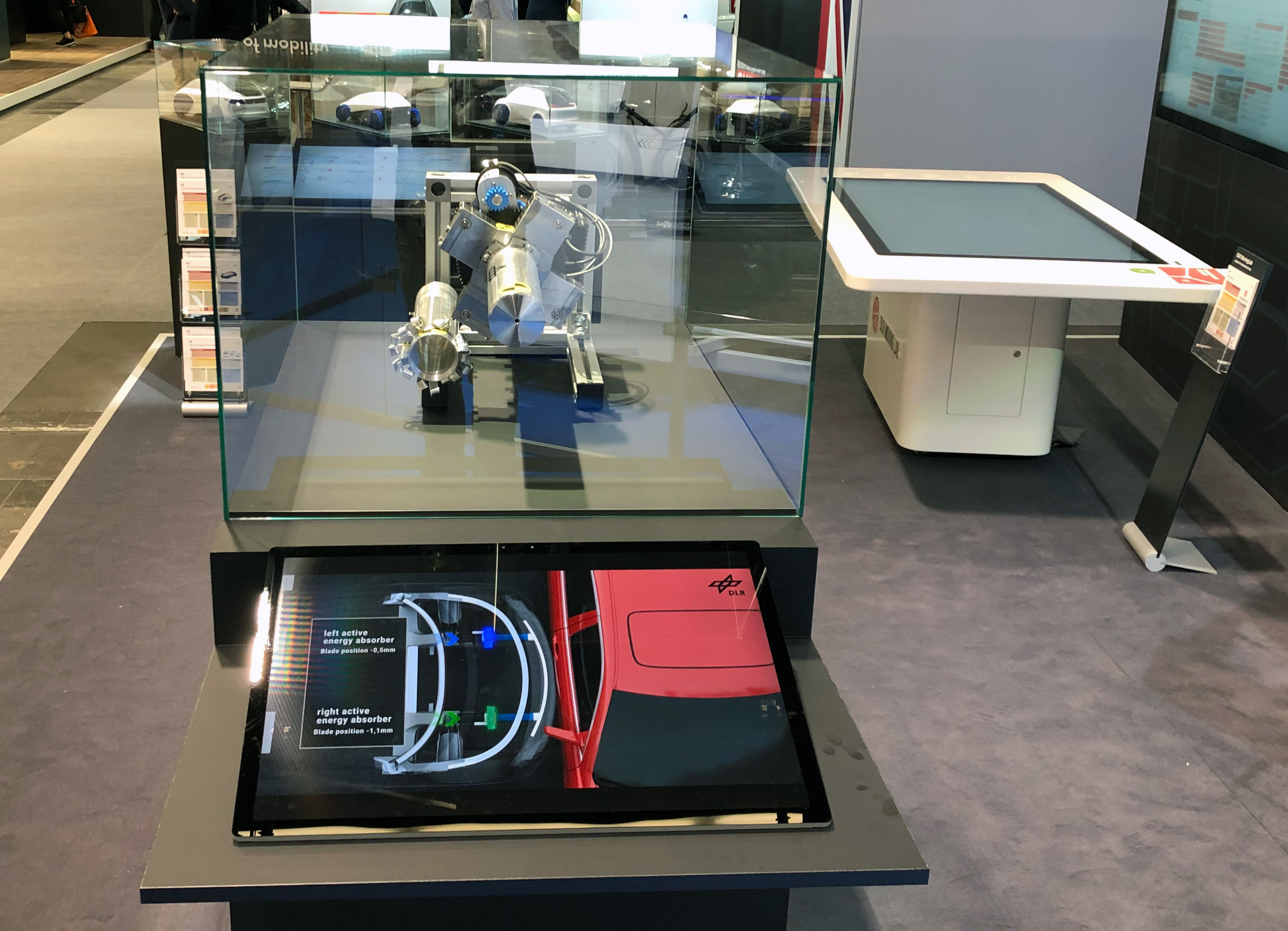Vehicle manufacturers have been expanding their model ranges with a variety of different vehicles for a number of years. Due to the applicable approval standards, vehicle manufacturers base their body structure designs primarily on the vehicle mass or kinetic energy. Smaller vehicles may thus be at a disadvantage compared to heavier ones, as they generally have lower mass and shorter front ends. Conventional longitudinal beams, designed for buckling, do not offer the possibility of adaptation for different accident scenarios. In order to meet this challenge, a longitudinal beam has been developed at the DLR Institute of Vehicle Concepts, where the crash characteristics can be actively adapted to different, expected and detected accident situations. Kinetic energy is dissipated by peeling the surface of a telescopic tube. By adjusting the peeling depth or the peeled volume, the energy absorbing capacity and the longitudinal force can be varied steplessly and in less than 120 milliseconds. This adaptation of the crash behaviour makes it possible to significantly improve the compatibility between vehicles of different masses, without having to accept losses in the case of collisions with rigid obstacles. At lower speeds and with rigid barriers, it is also possible, by deliberately reducing the force level, to reduce the deceleration acting on the occupants to a necessary minimum. In addition, this technology offers the option of specifically producing an asymmetrical load distribution through the different adjustment of the force levels of the two longitudinal beams. Simulations show that, especially in side impact collisions, when hitting rigid structures such as the B-pillar on the one hand, and rather soft structures like a door on the other hand, this technology offers advantages in terms of intrusion into the vehicle. It has thus been possible to develop and validate this system in tests that show the advantages for those involved in specific accident situations.



